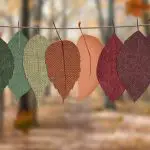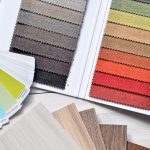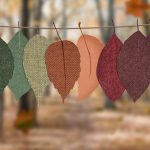Get ready to discover the latest trend in handwoven linen crafts!
In this article, we will unveil the revolutionary designs and techniques that are set to take 2023 by storm.
You’ll explore the origins of these crafts, witness their evolution, and delve into the world of sustainable materials.
Whether you’re interested in fashion or home decor, this is your guide to embracing the future of handwoven linen crafts.
So, get ready to be inspired and captivated by the creativity that lies ahead!
Table of Contents
Origins of Handwoven Linen Crafts
To understand the origins of handwoven linen crafts, you must delve into the rich history of textile production. Handwoven linen crafts have a deep cultural significance and have been a part of human civilization for thousands of years. The art of handweaving linen can be traced back to ancient civilizations such as Egypt, where linen was considered a symbol of purity and wealth.
In these early societies, handwoven linen crafts weren’t only used for practical purposes like clothing and bedding but also held great religious and ritualistic importance. Linen was used to create sacred garments for priests and pharaohs, and it was believed to possess healing and protective properties.
Fast forward to the present day, and handwoven linen crafts continue to hold cultural significance. They’ve become a symbol of craftsmanship, tradition, and sustainability. In a world dominated by mass production, handwoven linen crafts stand out as unique pieces that celebrate the artistry and skill of the weaver.
Furthermore, handwoven linen crafts have found contemporary applications in various industries. They’re used in interior design for creating beautiful textiles, upholstery, and curtains. Fashion designers incorporate handwoven linen fabrics into their collections, showcasing the versatility and elegance of this timeless material.
The Evolution of Techniques
You’ll be fascinated by the ancient roots and modern innovation that have shaped the evolution of handwoven linen crafts.
These advancements haven’t only transformed textile art but also played a crucial role in preserving traditional craftsmanship.
From innovative weaving techniques to the use of modern tools, the evolution of these techniques has paved the way for revolutionary linen crafts in 2023.
Ancient Roots, Modern Innovation
Experience the fascinating evolution of techniques in handwoven linen crafts, tracing their ancient roots to the modern innovations of today.
Ancient traditions meet contemporary designs: Witness the seamless blend of age-old weaving techniques with modern aesthetics, resulting in unique and visually captivating creations.
Eco-friendly practices and technological advancements: Explore the use of sustainable materials and eco-conscious production methods, coupled with cutting-edge technologies that enhance efficiency and quality.
Cultural significance and global impact: Delve into the rich cultural heritage embedded in every handwoven linen piece, celebrating diversity and promoting cross-cultural understanding. Discover how these crafts transcend borders, making a positive impact on local economies and fostering global connections.
From artistic expression to economic sustainability, handwoven linen crafts empower communities and encourage creative collaborations. Join the journey as we unveil the transformative power of this ancient craft, adapted to the needs and aspirations of the modern world.
Advancements Shaping Textile Art
As you delve into the world of handwoven linen crafts, you’ll witness the transformative power of advancements that have shaped the evolution of textile art.
Sustainability in textile art has become a prominent focus, with artists and artisans exploring ways to create environmentally friendly and ethically sourced materials. Technological advancements in weaving have played a crucial role in achieving this goal.
These advancements have led to the development of innovative techniques and materials that reduce waste, minimize environmental impact, and promote sustainable practices. For example, the use of digital looms allows for precise control over the weaving process, resulting in less material wastage. Additionally, the integration of recycled fibers and natural dyes further enhances the sustainability of textile art.
These advancements not only push the boundaries of creativity but also contribute to a more conscious and responsible approach to craft.
Preserving Traditional Craftsmanship
To truly appreciate the revolutionary handwoven linen crafts of 2023, it’s important to understand the evolution of techniques and the preservation of traditional craftsmanship. The preservation of heritage and cultural significance is crucial in keeping the rich history alive and passing it on to future generations.
Here are three ways in which traditional craftsmanship is being preserved:
-
Apprenticeships and mentorships: Skilled artisans are passing on their knowledge and techniques to the younger generation through apprenticeships and mentorships. This ensures that the traditional skills aren’t lost and continue to be honed and perfected.
-
Revival of ancient techniques: Artisans are rediscovering and reviving ancient techniques that were nearly forgotten. By studying historical texts and artifacts, they’re able to recreate traditional methods and incorporate them into contemporary designs, blending the old with the new.
-
Community involvement and support: Communities are coming together to support and promote traditional craftsmanship. Events, workshops, and exhibitions are organized to showcase the work of skilled artisans and raise awareness about the cultural significance of these crafts.
Innovative Designs and Patterns
Get ready to explore the exciting world of emerging textile techniques and unique weaving combinations.
The future of handwoven linen crafts is all about pushing boundaries and creating innovative designs and patterns that captivate the eye.
From intricate geometric shapes to bold color combinations, these new techniques will revolutionize the way we think about linen crafts, allowing for endless possibilities and artistic expression.
Emerging Textile Techniques
Discover the captivating world of emerging textile techniques, where innovative designs and patterns come to life through revolutionary handwoven linen crafts. These inventive fabrications push the boundaries of traditional weaving methods, resulting in stunning and unique textiles that captivate the eye.
Contemporary applications of these techniques have opened up a world of possibilities, allowing designers to create intricate and complex patterns that were once unimaginable.
-
Multidimensional Weaving: This technique involves weaving multiple layers of linen together, creating a three-dimensional effect that adds depth and texture to the fabric. It allows for the incorporation of intricate patterns and designs, making each piece a true work of art.
-
Laser-cut Embellishments: By using laser technology, intricate patterns and motifs can be precisely cut into the linen fabric, resulting in stunning and intricate designs. This technique adds a modern and edgy touch to traditional handwoven linen crafts.
-
Digital Printing: With advancements in digital printing technology, intricate and detailed designs can now be directly printed onto linen fabrics. This allows for a wide range of patterns and colors to be incorporated, giving designers endless possibilities to explore.
These emerging textile techniques have revolutionized the world of handwoven linen crafts, pushing the boundaries of design and creativity. With their inventive fabrications and contemporary applications, they’ve paved the way for a new era of textile artistry.
Unique Weaving Combinations
Continuing the exploration of emerging textile techniques, delve into the realm of unique weaving combinations that bring innovative designs and patterns to life through handwoven linen crafts.
In this exciting realm, artisans are pushing the boundaries of traditional weaving by incorporating unconventional materials and experimenting with new weaving techniques.
By using unconventional materials such as recycled plastics, metal threads, and even natural fibers like bamboo and banana, weavers are able to create stunning and unexpected textures in their linen crafts. These materials add a touch of uniqueness and sustainability to the final products.
Experimental weaving techniques further enhance the creativity in these one-of-a-kind pieces. Weavers are exploring complex patterns like twill, overshot, and double weave, as well as incorporating techniques like tapestry and brocade. These techniques allow for intricate designs and intricate detailing, resulting in truly remarkable handwoven linen crafts.
With these unique weaving combinations, artisans are able to breathe new life into the world of textile artistry, creating designs and patterns that captivate the imagination and spark the interest of textile enthusiasts worldwide.
Exploring Sustainable Materials
Explore the wide range of sustainable materials used in revolutionary handwoven linen crafts. When it comes to creating eco-friendly alternatives in the world of sustainable fashion, the materials used are crucial. Here are three sustainable materials that are making waves in the industry:
-
Organic Cotton: Organic cotton is a popular choice for sustainable fashion due to its minimal environmental impact. It’s grown without the use of harmful chemicals or pesticides, making it safer for both the environment and the people involved in its production. Handwoven linen crafts that incorporate organic cotton not only look stylish but also contribute to a greener future.
-
Bamboo Fiber: Bamboo fiber is another sustainable material that’s gaining popularity in the fashion industry. It’s known for its softness, breathability, and biodegradability. Bamboo grows quickly and requires fewer resources compared to other plants, making it an excellent choice for sustainable fashion. Handwoven linen crafts that incorporate bamboo fiber aren’t only eco-friendly but also provide a luxurious feel.
-
Recycled Materials: Recycling plays a crucial role in sustainable fashion, and handwoven linen crafts are no exception. Recycled materials such as recycled polyester or upcycled fabrics can be used to create unique and innovative designs. By giving new life to old materials, these crafts contribute to reducing waste and promoting a circular economy.
Incorporating these sustainable materials into handwoven linen crafts not only adds a touch of style but also helps protect the environment and promote a more sustainable future for fashion.
Linen Crafts in Fashion and Home Decor
As you explore the trend of revolutionary handwoven linen crafts, you’ll discover the captivating ways in which they’re transforming both the fashion industry and home decor.
Linen crafts have found their way into the world of fashion, with designers incorporating this versatile fabric into their collections. Linen, known for its breathability and lightweight nature, has become a popular choice for clothing, especially in warm weather. From linen dresses and blouses to linen pants and suits, fashion enthusiasts are embracing the natural and sustainable qualities of linen.
In addition to fashion, linen crafts have also made their mark in home decor. Linen curtains, with their soft and flowing texture, add an elegant touch to any room. Linen bedding provides a luxurious feel and a comfortable night’s sleep. Linen tablecloths and napkins bring a touch of sophistication to dining experiences. The natural beauty and durability of linen make it a perfect choice for various home decor items.
Linen crafts in fashion and home decor not only offer style and elegance but also align with the growing demand for sustainable and eco-friendly products. With its biodegradable and renewable properties, linen is a great alternative to synthetic materials. It’s no wonder that linen crafts are gaining popularity, as they not only contribute to sustainable living but also add a touch of timeless beauty to both fashion and home decor.
Embracing the Future of Handwoven Linen Crafts
Get ready to dive into the exciting world of handwoven linen crafts as you embark on a journey that embraces the future of this timeless art form. Handwoven linen crafts have a rich history, but they aren’t stuck in the past. They’re evolving and adapting to the changing times, incorporating technology integration and staying ahead of future market trends.
Here are three key ways in which handwoven linen crafts are embracing the future:
-
Technology Integration: Handwoven linen crafts are no longer limited to traditional weaving techniques. With the integration of technology, artisans are able to leverage advanced tools and equipment to enhance their craft. Computerized looms, for example, allow for more intricate designs and precise weaving patterns. This fusion of traditional craftsmanship with modern technology opens up new possibilities and pushes the boundaries of what can be achieved in handwoven linen crafts.
-
Innovation in Design: The future of handwoven linen crafts lies in constantly pushing the envelope in terms of design. Artisans are experimenting with new colors, patterns, and textures to create unique and eye-catching pieces. From bold geometric designs to delicate floral motifs, the possibilities are endless. By constantly innovating in design, handwoven linen crafts are able to stay relevant and appeal to a wider audience.
-
Adapting to Future Market Trends: Handwoven linen crafts aren’t immune to the influence of market trends. As consumer preferences change, artisans are quick to adapt and incorporate these trends into their creations. Whether it’s eco-friendly and sustainable materials or minimalist and contemporary designs, handwoven linen crafts are embracing these market trends to ensure their continued relevance and success.
Frequently Asked Questions
How Can I Learn the Art of Handwoven Linen Crafts?
If you want to learn the art of handwoven linen crafts, start by exploring different techniques. Discover the historical significance of this craft in various cultures. Embrace the beauty and creativity that comes with this timeless art form.
What Are the Benefits of Using Linen as a Sustainable Material for Crafts?
Linen is a sustainable material for crafts because it is biodegradable and requires less water and pesticides to grow. Plus, using innovative techniques for handwoven linen crafts can create unique and eco-friendly products.
Are There Any Specific Regions or Countries Known for Their Expertise in Handwoven Linen Crafts?
There are several regions and countries known for their expertise in handwoven linen crafts. These crafts have a rich cultural significance and have evolved in contemporary design, making them highly sought after.
Can Handwoven Linen Crafts Be Customized or Personalized According to Individual Preferences?
Yes, handwoven linen crafts can be customized and personalized according to your preferences. You have the option to choose specific designs, colors, and patterns to create unique and personalized linen crafts.
Are There Any Specific Tools or Equipment Required for Handwoven Linen Crafts?
To create handwoven linen crafts, you’ll need specific tools and equipment like a loom, shuttle, and yarn. Techniques and patterns can be learned through classes or online resources. Get started and unleash your creativity!
- What Is the Difference Between Organza and Organza Silk? - April 23, 2024
- What Are the Pros and Cons of Organza Fabric? - April 23, 2024
- Is Organza Costly? - April 23, 2024





